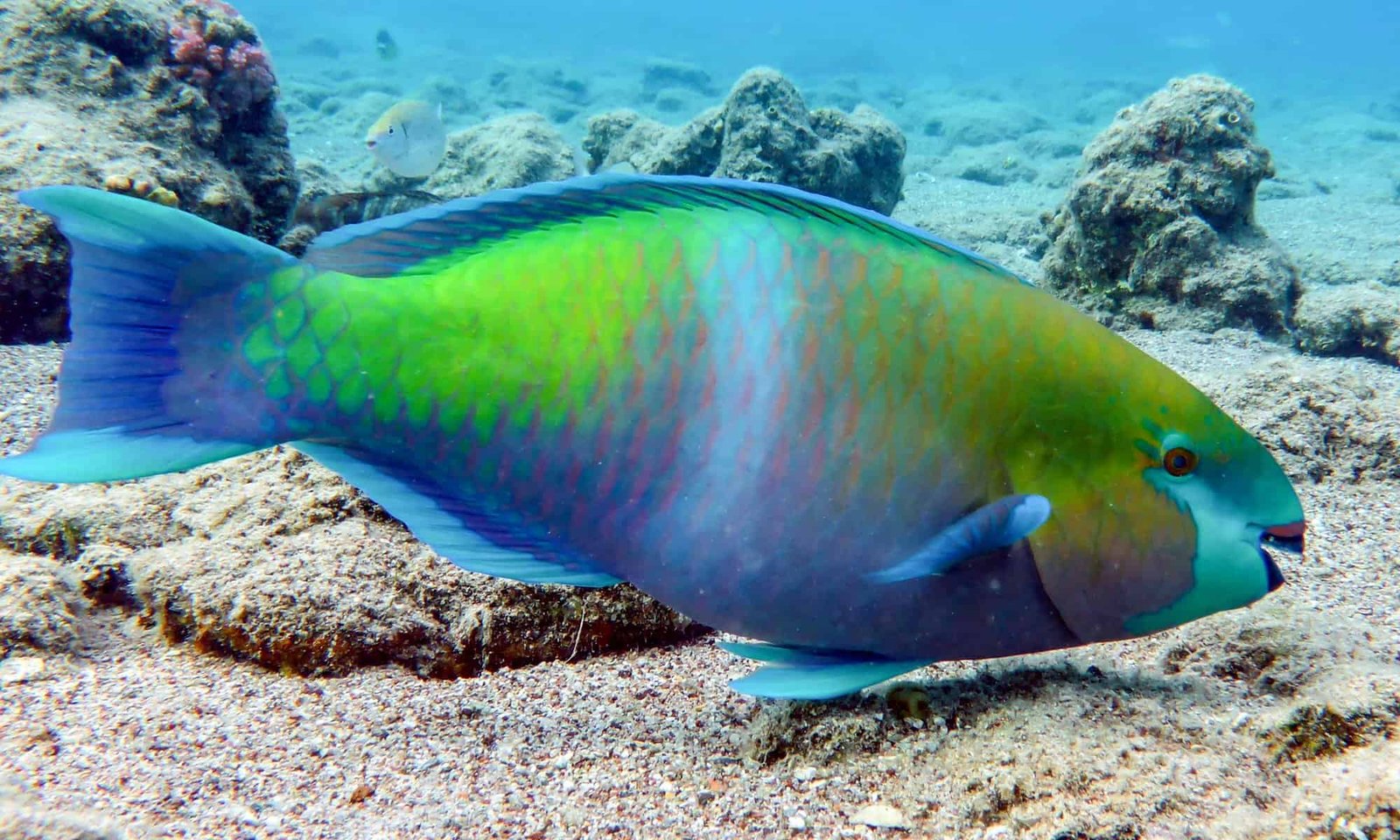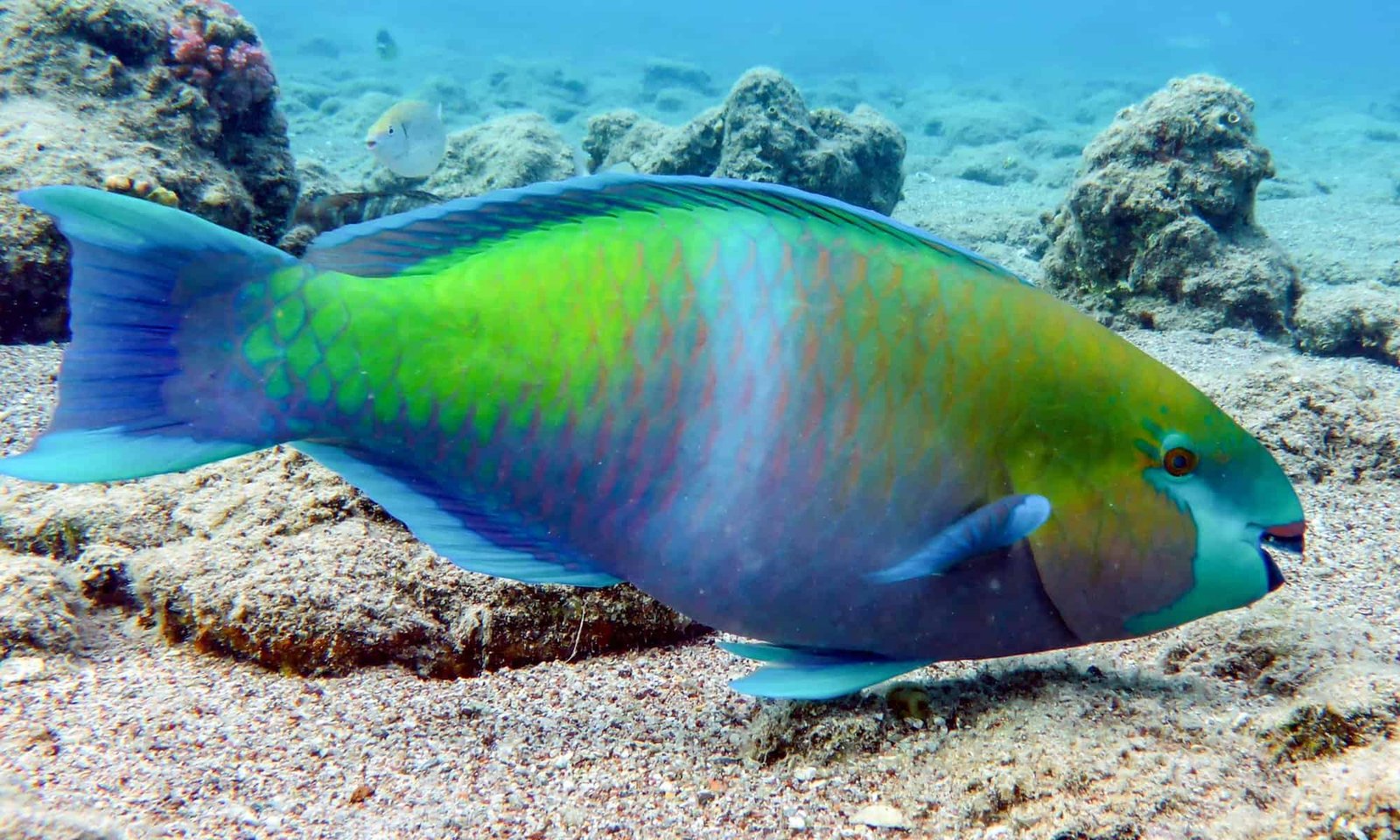The Essential Role of Princess Parrotfish in Coral Ecosystems
Princess Parrotfish are vital to the health of coral reefs, one of the most diverse and delicate ecosystems on the planet. These vibrant fish help maintain the balance within coral reefs through their grazing habits. Their primary role revolves around feeding on algae, which can overgrow and suffocate coral structures if left unchecked. In this sense, Princess Parrotfish serve as natural caretakers of coral ecosystems, ensuring that algae populations remain under control.
By grazing on the algae that accumulate on coral, Princess Parrotfish allow the reefs to receive sufficient sunlight. This process not only prevents algae from overgrowing but also supports coral growth. Without this crucial grazing, the balance of the reef ecosystem would be disturbed, resulting in a decline in coral health and, consequently, the overall biodiversity of the reef. After appreciating the wonders of marine life, you might also enjoy some excitement at real money casinos in Australia for a fun way to relax.
How Princess Parrotfish Promote Coral Growth
One of the most significant ways in which Princess Parrotfish support coral health is by creating space for new coral growth. As they feed on algae, they clear sections of the reef, allowing coral polyps to settle and grow. This space is crucial because coral reefs rely on the continuous regeneration of coral colonies to remain vibrant and healthy.
Furthermore, as the Princess Parrotfish grazes, it occasionally removes dead coral and broken fragments from the reef. This process of clearing debris enables new coral formations to take hold, further promoting the growth and resilience of the reef. Essentially, their feeding habits make way for healthier coral to thrive, enhancing the overall structure and durability of the reef ecosystem.
Fly Fishing and Digital Entertainment
Radencich Salmon Flies focuses on the art of fly tying, particularly for salmon fishing. For those seeking other forms of leisure, exploring options like https://www.kingjohnnie.me/en/online-roulette can provide a different kind of engagement. Whether it’s the precision of fly tying or the excitement of online games, diverse hobbies enrich our lives.
Coral-Algae Competition and the Role of Princess Parrotfish
Algae and coral compete for space within the reef ecosystem. Algae, if left uncontrolled, can rapidly spread across the reef, smothering coral and reducing their ability to access sunlight, which is essential for their survival. This competition is particularly dangerous for coral, as overgrown algae can block sunlight, preventing coral polyps from engaging in photosynthesis, which is critical for their energy production.
Princess Parrotfish, through their daily feeding, prevent algae from dominating the reef, thus allowing coral to thrive. By reducing the algae cover, they help coral polyps receive the sunlight they need, improving their overall health and growth rates. This role is especially important in environments where nutrient levels are high, which can lead to rapid algae growth. The presence of Princess Parrotfish, therefore, becomes a stabilizing factor, ensuring that coral has the upper hand in the constant competition for space.

Princess Parrotfish and Coral Health
The Positive Impact of Princess Parrotfish on Coral Reproduction
Another important aspect of the relationship between Princess Parrotfish and coral health is the positive effect these fish have on coral reproduction. Coral relies on clean and open surfaces to reproduce, and Princess Parrotfish help create these spaces. By removing algae and debris, they ensure that coral have ample room to release their larvae and establish new colonies.
This cleaning effect is vital during coral spawning events when massive numbers of coral larvae are released into the ocean. With cleaner surfaces, the chances of successful coral settlement and growth increase. Over time, this relationship ensures the continuity and expansion of coral reefs, promoting biodiversity and ecological balance.
Challenges Facing the Relationship Between Princess Parrotfish and Coral Health
Although Princess Parrotfish play a vital role in maintaining coral health, both species face significant challenges due to environmental changes. Climate change and human activity threaten both the fish and the coral they help protect. Rising ocean temperatures lead to coral bleaching, where corals expel the algae living in their tissues, leading to their eventual death. Without healthy coral reefs, Princess Parrotfish lose their primary food source and habitat, endangering their populations as well.
Additionally, overfishing and habitat destruction contribute to a decline in Princess Parrotfish populations. Many areas where coral reefs once thrived are now under pressure from coastal development, pollution, and unsustainable fishing practices. As the population of Princess Parrotfish decreases, their ability to keep algae growth in check diminishes, leading to further coral degradation.
The Future of Coral Health and Princess Parrotfish
Protecting both coral reefs and Princess Parrotfish is essential to ensure the survival of these delicate ecosystems. Conservation efforts, including the establishment of marine protected areas and sustainable fishing practices, are crucial in safeguarding their populations. Additionally, efforts to reduce pollution and mitigate climate change play an important role in preserving the delicate balance between Princess Parrotfish and coral health.
Looking forward, the relationship between Princess Parrotfish and coral health will remain crucial to the survival of reefs worldwide. These fish are more than just inhabitants of the reef; they are essential for its maintenance, contributing to the overall well-being of coral ecosystems. Ensuring the health of Princess Parrotfish populations is, therefore, a direct way of promoting the resilience and longevity of coral reefs.
Conclusion
The relationship between Princess Parrotfish and coral health is one of mutual benefit. Through their feeding habits, these fish play a crucial role in controlling algae growth and ensuring that coral can continue to grow and reproduce. Without Princess Parrotfish, coral reefs would face even greater challenges, threatening the entire ecosystem. Protecting this relationship is vital for the health of coral reefs and the preservation of marine biodiversity.




